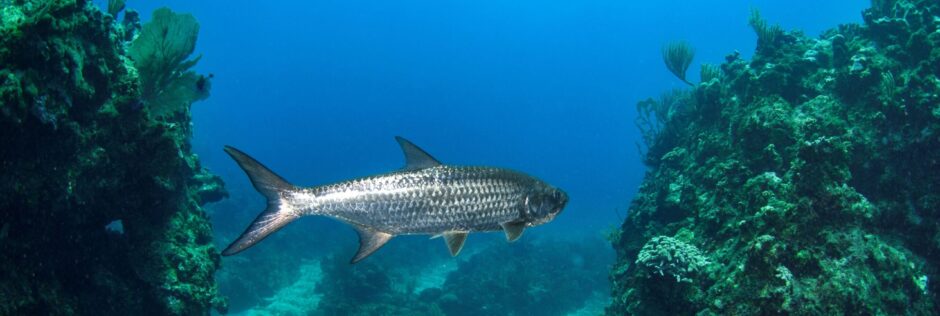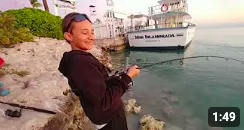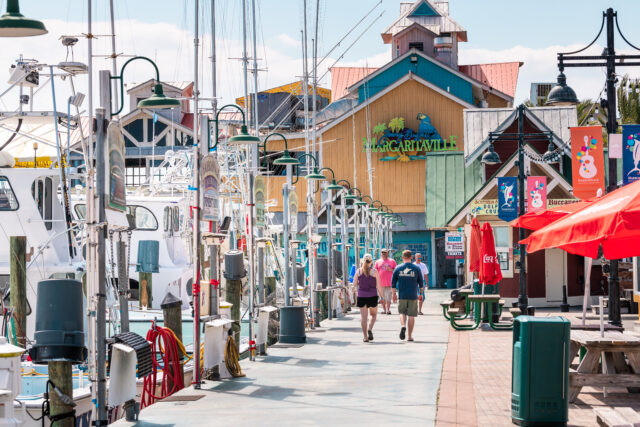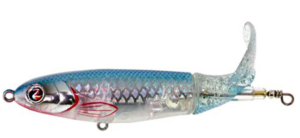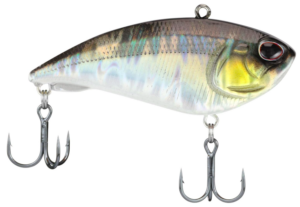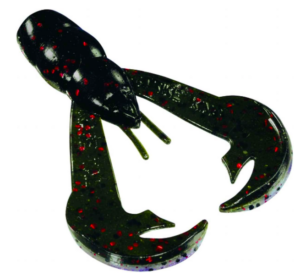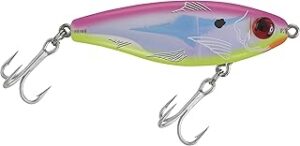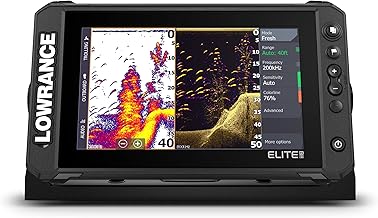Bay Fishing for Tarpon
Tarpon can often be found in many of the bays during their annual migration up the Gulf coast and Atlantic coast. Anglers target tarpon many different ways once these fish enter the bays. It is common to see anglers vertical jigging over deeper water in the passes and around bridges. Light tackle anglers and fly fishermen search for migrating tarpon along the beaches, on the flats and in the backwaters. Resident tarpon can also be targeted in the bays, however, the numbers of resident tarpon do not compare to the huge numbers of migratory tarpon that are available during the peak of the migration.
Bridge Fishing for Tarpon
The bridges are great areas to target tarpon. Tidal changes are key as the moving water will help set up numerous ambush points for tarpon and other game fish. Bridges also attract fish with the shade during the day and the lights at night. Anglers fish with a variety of baits and artificial lures. Some of the common baits are live mullet and live crabs. Bucktail jigs, jigging spoons and swimbaits are some of the popular lures that anglers will use around the bridges.
You can expect an amazing fight once you hook up with a big tarpon. Around the bridges, you should factor in the current, nearby boats, anglers from up above on the bridge, whether or not you are anchored and how you are going to chase the fish if you need to do that. For the anglers that anchor up, it is common to see them throw their anchor rope overboard once they hook up with a fish. Their rope will be attached to some type of flotation device so they can come back and find their anchor once they are done fighting the fish. Anglers do this because there is usually no time to pull up the anchor once a tarpon is hooked. While fighting a fish around a bridge, it is important to get that fish away from the bridge while fishing it, or there is a good chance that you can get snagged up around the bridge and lose the fish. Once the tarpon moves away from the bridge, experienced anglers will position their boat in between the bridge and the fish. This usually keeps the tarpon from swimming back towards the bridge. If you can keep the fish in open water, you have a much better chance to catch them.
Dock Fishing for Tarpon
Tarpon can often be found around docks. Most of the time, these fish will be juvenile tarpon that will be in the 10 to 30 pound range. The bite is usually better in the morning, evening and at night when fishing around the docks. The docks that have lights will often attract tarpon and many other types of game fish at night. You can catch these fish with live bait and artificial lures, but these fish will spook easily so make sure to approach them quietly.
Flats Fishing for Tarpon
The flats offer some of the most exciting fishing opportunities for tarpon. In most of the better saltwater fishing destinations, juvenile tarpon can be caught year-round. These fish are smaller fish, usually less than 30 pounds, but they can still be a lot of fun on light tackle.
The bigger, migrating tarpon can also be caught on the flats. Some of the best places to fish for tarpon will give anglers the chance to cast to well over a hundred tarpon in a day during the peak of their migration. In the Florida Keys, it is common to see several hundred tarpon on the flats on any given day when these fish migrate through the area. Anglers often target tarpon with fly fishing gear on the flats, but you can also catch them with artificial lures and live bait if you can get your bait in front of them without spooking them.
Fishing the Beaches for Tarpon
Migratory tarpon can often be found roaming the beaches. It is not uncommon to see schools of 10, 20 or even 100 tarpon cruising along the beaches. Anglers typically target these fish in boats very early in the morning. Once you find a school of tarpon rolling on the surface, the challenge begins. You need to get in front of these fish and get your bait, lure or fly in front of these fish without spooking the school.
Some anglers will fish from the surf for migratory tarpon. If you can get out to the beach early and spend some time scouting out an area, you have a better chance of finding a school of tarpon. On beaches that allow cars, you can save a lot of time by slowly cruising down the beach in search of tarpon. Clear water will also help you spot some fish.
Long fishing rods and reels that hold lots of line are essential because you don’t have a boat to go chase the fish once it is hooked. Braided line has a small diameter, so you can get quite a bit more braided line on your reels than mono or fluorocarbon. A fluorocarbon leader will help you get more bites though. Some of the popular baits to fish the surf are huge pinfish, mullet, blue crabs and live jumbo shrimp. Swimbaits, bucktail jigs, jigging spoons and flies will also entice some strikes from these schooling tarpon.
Fishing the Creeks, Inlets & Backwaters for Tarpon
The creeks, inlets and backwaters are great areas to target juvenile tarpon, which are less than 30 pounds. Most of the tarpon that you will find in the smaller tidal creeks will be small, often less than 5 pounds. The backwaters that have deeper water can hold some bigger fish. These juvenile tarpon are usually available year round, so anglers can have some fun catching these fish while they wait for the much larger, migratory tarpon to move through their area. Most anglers fish with light spinning tackle or fly fishing gear when targeting these juvenile tarpon. A medium-heavy action spinning rod with 20 to 30 pound test is usually heavy enough to handle most tarpon that you will find in the backwaters. A 15 to 20 pound tarpon will still put up an excellent fight on light tackle and they will most likely impress you with several acrobatic jumps during the fight.
Fishing the Mangroves for Tarpon
The mangroves are great areas for catching juvenile tarpon. A small bay with mangrove-lined shorelines will often hold some of these smaller tarpon on a high tide. Moving water is essential, so fishing a couple of hours before and after the high tide will likely give you the best results. Smaller tarpon can often be found right along the mangroves.
Fishing the Passes for Tarpon
The passes are great areas to target large, migratory tarpon. These big fish will use the passes as their underwater highways to enter the bays and move back out to the Gulf or ocean. The passes usually have plenty of current during tidal changes, which helps bring in all kinds of bait and tarpon will be there waiting for an easy meal. If you time it right, you may see hundreds of fish on your fish finder as tarpon move into these passes. The number of boats in the pass can easily dictate how you are going to fish. You may end up making long drifts with live bait to find feeding tarpon. Anchoring up on a school of fish may be an option and you can fish with live bait or vertical jig with spoons and jigs. If there is a good current moving through the pass, most of the other boats will probably be drifting through the area. It makes sense to drift right along with them to make it easier on everyone when someone hooks up with a tarpon and the fish goes crazy.
